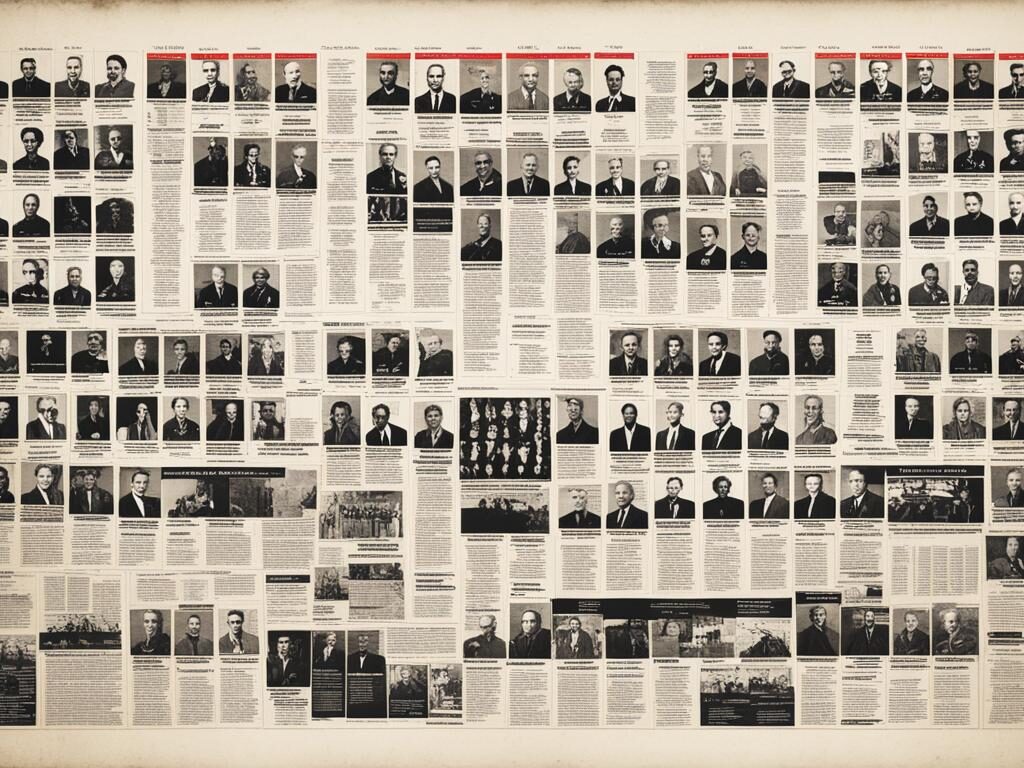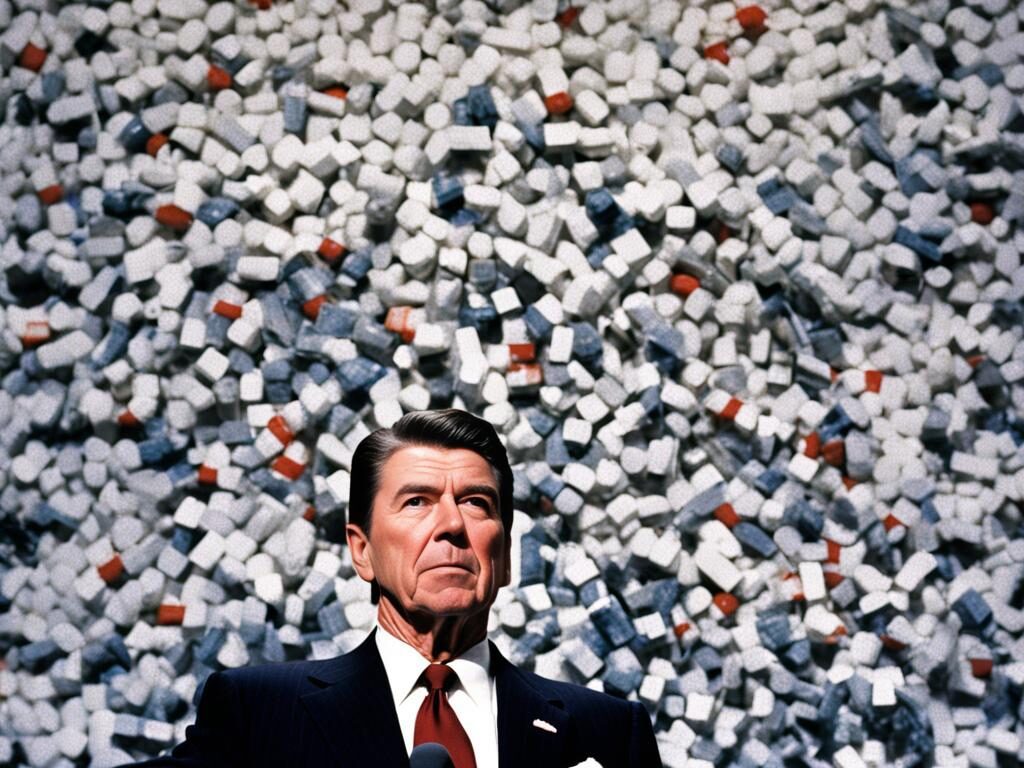The War on Drugs has long been a controversial topic, with critics arguing that it is a front for governmental manipulation. Former Nixon domestic policy chief John Ehrlichman revealed in a decades-old interview that the war on drugs was created as a political tool to target specific communities. The goal was to associate marijuana with the antiwar left and heroin with the black community, enabling the government to disrupt these communities and maintain control.
This revelation raises important questions about the effectiveness and fairness of drug policies and enforcement. The focus on criminalization and punitive measures in the war on drugs has led to significant consequences for individuals and communities affected by drug addiction and abuse. While the intention may have been to combat drug trafficking and reduce drug-related crime, the ramifications extend far beyond these initial objectives.
It is essential to consider the broader implications of the war on drugs, including the impact on drug addiction, abuse prevention, drug rehabilitation, and drug education. Alternative approaches, such as harm reduction strategies, drug decriminalization, and community-based initiatives, have gained traction as more people recognize the need for a shift in drug policies towards a more comprehensive and compassionate approach.
In this article, we will explore the various aspects of the war on drugs, including its impact on drug availability, its connection to police brutality, and its historical roots in policing and race in the United States. We will also discuss the escalation of the war on drugs under President Reagan and the erosion of Fourth Amendment rights. By examining these issues, we hope to shed light on the complexities and challenges surrounding drug policies and encourage critical thinking about the path forward.
The Impact of the War on Drugs on Drug Availability
Despite the efforts of the war on drugs, drug availability remains high and drugs are widely accessible. Evaluations of specific tactics, such as raids on crack houses and crackdowns, show minimal effects on drug availability, with any impact quickly decaying over time. In some cases, these tactics may even displace drug activity to other areas and contribute to drug-related violence. This calls into question the effectiveness of the war on drugs in reducing drug activity and suggests that alternative approaches may be needed.
Drug Availability and Access
Drug availability continues to be a significant issue despite the ongoing war on drugs. Although law enforcement agencies have implemented various strategies to counter drug trafficking and distribution, the accessibility of drugs remains largely unaffected. Studies have shown that raids on crack houses and crackdowns have limited impact on drug availability, with the availability of drugs quickly bouncing back in the market.
In some instances, the aggressive tactics employed by law enforcement agencies may inadvertently displace drug activity from one area to another without significantly reducing drug availability. This displacement often leads to an increase in drug-related violence as different groups vie for control over new territories. The ineffectiveness of these tactics raises questions about their long-term viability in addressing drug availability and related issues.
Alternative Approaches for Drug Control
The limitations of the war on drugs in curbing drug availability have prompted discussions around the need for alternative approaches. Some experts argue that focusing solely on punitive measures and law enforcement efforts is not enough to address the root causes of drug activity. Instead, alternative approaches such as harm reduction, drug decriminalization, and community-based initiatives have gained attention as potentially more effective strategies.
Harm reduction strategies prioritize minimizing the harm associated with drug use rather than imposing strict criminal penalties. These strategies involve providing clean needles, safe injection sites, and access to treatment and rehabilitation services. By focusing on harm reduction, these approaches aim to address the underlying issues of drug addiction and promote the overall well-being of individuals and communities.
Drug decriminalization has also been proposed as an alternative approach that shifts the focus from criminal punishment to treatment and rehabilitation. By reducing the criminal penalties for drug possession, drug decriminalization aims to provide individuals with the opportunity to seek help rather than perpetuating cycles of incarceration and stigmatization.
Community-based initiatives, such as education, outreach programs, and social support networks, aim to address the social and economic factors that contribute to drug activity. By providing individuals with opportunities for education, employment, and community engagement, these initiatives offer alternatives to drug involvement and promote healthier, more stable communities.
The Connection Between War on Drugs Policing and Police Brutality
The War on Drugs has had alarming ramifications, one of which is the increase in police brutality, with a disproportionate impact on Black communities. This connection can be traced back to the erosion of constitutionally protected rights and the implementation of specific policing strategies.
The Erosion of Fourth Amendment Rights
The Fourth Amendment of the United States Constitution safeguards individuals from unreasonable searches and seizures. However, the War on Drugs has gradually eroded these fundamental rights, creating a conducive environment for police brutality.
The erosion of Fourth Amendment rights can be exemplified by the controversial Supreme Court decision in Terry v Ohio. This ruling established a new category of police intervention, allowing officers to stop and frisk individuals based on reasonable suspicion rather than requiring probable cause. As a result, law enforcement gained broader discretion for searches and seizures, raising concerns about potential infringements on individual rights.
The Role of Policing Strategies: Stop and Frisk and SWAT Teams
Two key policing strategies that have gained prominence in the context of the War on Drugs are stop and frisk and Special Weapons and Tactics (SWAT) teams. These strategies, while purportedly aimed at combating drug-related crimes, have contributed to instances of police brutality and racial disparities in encounters with law enforcement.
Stop and frisk policies grant police officers the authority to detain and search individuals based on reasonable suspicion, often leading to higher rates of encounters with law enforcement. Unfortunately, studies have shown that these encounters disproportionately target racial and ethnic minority groups, exacerbating existing racial disparities.
SWAT teams were initially formed for handling high-risk situations but have increasingly been deployed in routine law enforcement activities. This shift has raised concerns about unnecessary force, violence, and the militarization of the police. The use of SWAT teams in drug raids has resulted in numerous cases of excessive force, property damage, and even the loss of innocent lives.
The combination of the erosion of Fourth Amendment rights and the implementation of these policing strategies has created a volatile environment, where instances of police brutality are more likely to occur, particularly within marginalized communities.
While exploring the connection between the War on Drugs and police brutality, it becomes clear that reforming these policing strategies and addressing the erosion of constitutional rights is crucial for combating racial disparities and ensuring justice within our society.
The Historical Context of Policing and Race in the US
The roots of formal policing in the US can be traced back to slave patrols, which were established to control slaves and maintain racial hierarchies. After the Civil War, these slave patrols were replaced by police officers who enforced Black codes, which criminalized many activities for Black adults and children that were considered petty offenses when committed by Whites. Policing in the US has been historically intertwined with race, with police forces being used to enforce racial segregation and discriminatory laws like Jim Crow.
Slave Patrols: Controlling Slaves and Maintaining Racial Hierarchies
During the era of slavery, slave patrols were established in the Southern states as a means to control enslaved individuals and ensure compliance with the system of slavery. These patrols consisted of armed groups who tracked down and captured runaway slaves, preventing them from escaping to freedom. Slave patrols also had the authority to punish enslaved individuals who were found to be disobedient or attempting to resist their bondage.
The establishment of slave patrols highlights the deep-seated racism and desire to maintain racial hierarchies that were prevalent during this time. The primary role of these patrols was to protect the economic interests and social order of the slaveholding class, actively suppressing any attempts by enslaved individuals to seek freedom or challenge the institution of slavery.
Black Codes: Criminalizing Activities for Black Americans
After the Civil War and the abolition of slavery, Black codes were enacted in various Southern states. These codes were a set of laws that severely restricted the rights and freedoms of newly freed Black Americans. They aimed to maintain control over the Black population and reinforce a racial hierarchy that had existed during the era of slavery.
Black codes criminalized everyday activities for Black adults and children that were considered minor offenses or not punishable when committed by White individuals. These included restrictions on where Black people could live, limitations on their employment options, and curfews that aimed to curtail their movements. The enforcement of these codes by police officers further perpetuated racial segregation and discrimination by targeting Black communities.
Jim Crow Laws: Enforcing Racial Segregation and Discrimination
Following the abolition of slavery and the Reconstruction era, racial segregation and discrimination persisted in the United States. Jim Crow laws were a system of state and local laws that enforced racial segregation and denied Black Americans their civil rights. These laws were prevalent in the Southern states from the late 19th century to the mid-20th century.
Police forces played a crucial role in enforcing Jim Crow laws, ensuring the separation of races in public spaces, such as schools, transportation, and recreational facilities. They were responsible for upholding racial hierarchy, often through violent means, and suppressing any resistance from Black individuals and communities.
The historical context of policing in the US reveals a deeply rooted connection between law enforcement, race, and systemic oppression. The origins of police forces in slave patrols, followed by the enforcement of Black codes and Jim Crow laws, demonstrate the long-standing history of racial discrimination and the role of policing in perpetuating racial inequalities.

| Racial Hierarchies in Policing | Enforcement of Black Codes | Jim Crow Laws and Policing |
|---|---|---|
| Slave patrols maintained control over enslaved individuals and upheld racial hierarchies. | Police officers enforced Black codes, which criminalized many activities for Black adults and children. | Police forces played a crucial role in enforcing Jim Crow laws, ensuring racial segregation and discrimination. |
| Slave patrols aimed to suppress resistance and maintain the institution of slavery. | Black codes restricted the rights and freedoms of newly freed Black Americans. | Jim Crow laws denied Black Americans their civil rights and perpetuated racial segregation. |
| Slave patrols reflected the racist ideologies of the time and protected the interests of the slaveholding class. | Black codes were a means to reinforce racial hierarchy and control the Black population. | Jim Crow laws relied on police forces to uphold racial discrimination and suppress Black resistance. |
The Escalation of the War on Drugs Under President Reagan
President Reagan’s administration played a significant role in intensifying the War on Drugs during the 1980s. With a focus on anti-drug enforcement, the Reagan administration implemented policies that had far-reaching consequences.
Under President Reagan, there was a substantial increase in spending on anti-drug enforcement efforts. The federal government allocated significant resources and established specialized task forces to combat drug-related activities. The aim was to disrupt drug trafficking networks and reduce drug availability.
Additionally, President Reagan and his administration actively contributed to the demonization of drug use and users. They promoted a cultural narrative that emphasized the dangers and moral decay associated with drug use. This approach aimed to deter individuals from experimenting with drugs and to combat the perceived societal ills caused by drug addiction.
The impact of these policies was substantial. Between 1982 and 2007, drug-related arrests tripled, signaling a significant increase in the enforcement of drug laws. However, these policies also revealed racial disparities in drug-related arrests. People of color, especially African Americans, were disproportionately targeted and arrested for drug offenses, leading to a deepening divide in the criminal justice system.
While drug-related arrests surged, arrests for other offenses declined, indicating a disproportionate focus on drug-related crimes. This prioritization of drug enforcement over other criminal activities had wide-ranging implications for the criminal justice system and raised questions concerning the fairness and effectiveness of the War on Drugs.

The escalation of the War on Drugs under President Reagan had a lasting impact on drug enforcement, public perception, and societal disparities. The policies implemented during this time shaped the landscape of drug enforcement and contributed to the enduring racial disparities within the criminal justice system.
The Erosion of Fourth Amendment Rights
The Fourth Amendment of the United States Constitution guarantees the right of individuals to be secure in their persons, houses, papers, and effects against unreasonable searches and seizures. However, the War on Drugs has resulted in the erosion of these rights, raising concerns about the balance between law enforcement efforts and individual liberties.
An important legal precedent in this erosion is the Supreme Court case of Terry v Ohio. In this landmark decision, the Court established a new category of police intervention known as stop and frisk. This ruling allowed law enforcement officers to stop and search individuals based on reasonable suspicion rather than the traditional requirement of probable cause.
This shift in legal standards has granted law enforcement broader discretion when conducting searches and seizures. While the intention behind this decision was to enhance public safety and combat drug-related crimes, it has raised questions about the potential infringement of individual rights.
Proponents argue that stop and frisk enables police to effectively combat drug trafficking and possession, while opponents contend that it disproportionately targets minority communities and leads to racial profiling. The controversy surrounding the erosion of Fourth Amendment rights in the context of the War on Drugs continues to fuel debates about the balance between law enforcement objectives and the protection of civil liberties.
Impact of Fourth Amendment Erosion
The erosion of Fourth Amendment rights has had far-reaching consequences. The expanded powers granted to law enforcement through the Terry v Ohio ruling have altered the dynamics between citizens and the police. Critics argue that it has fueled a climate of mistrust, as individuals question the motives and fairness of law enforcement practices.
Furthermore, the erosion of Fourth Amendment rights has resulted in an increase in encounters between law enforcement and members of marginalized communities. This has led to a disproportionately high number of arrests and searches of individuals belonging to racial and ethnic minority groups, exacerbating existing social inequalities.

The Role of Stop and Frisk and SWAT Teams in Police Brutality
Stop and frisk and SWAT teams are two policing strategies that have disproportionately affected marginalized communities, particularly communities of color. These strategies have played a significant role in contributing to incidents of police brutality and the targeting of racial and ethnic minority groups.
Stop and Frisk
Stop and frisk allows police officers to stop and search individuals based on reasonable suspicion, leading to a higher likelihood of encounters and potential abuses of power. While proponents argue that this strategy is necessary for crime prevention and public safety, critics argue that it contributes to racial profiling and violates the Fourth Amendment rights of individuals.
SWAT Teams
SWAT teams, initially designed for high-risk situations such as hostage crises and active shooters, have increasingly been deployed for routine law enforcement activities. This shift has resulted in the unnecessary use of force and violence. The militarization of law enforcement through the deployment of SWAT teams has disproportionately impacted marginalized communities and has been criticized for exacerbating police brutality.
Both stop and frisk and SWAT teams have been subject to controversies and lawsuits highlighting racial targeting and excessive use of force. These strategies contribute to the erosion of trust between police and the communities they are meant to serve, particularly among communities of color.
The Need for Alternative Approaches to Drug Policies
The failures of the War on Drugs have highlighted the necessity for alternative approaches to drug policies. It is clear that the current punitive measures have not effectively addressed the issue of drug abuse and addiction. In order to tackle this complex problem, alternative strategies centered on harm reduction, drug decriminalization, drug rehabilitation, and community-based initiatives have gained significant attention.
Harm Reduction
Harm reduction strategies prioritize minimizing the adverse consequences associated with drug use while acknowledging that drug use may persist. This approach focuses on public health rather than punishment. One example of harm reduction is the provision of clean needles and safe injection sites. By implementing these measures, the spread of bloodborne diseases, such as HIV and hepatitis, can be prevented, and individuals can receive support and guidance in managing their drug use.
Drug Decriminalization
Drug decriminalization aims to shift the focus from criminal punishment to treatment and rehabilitation for individuals found in possession of drugs for personal use. This approach recognizes that drug addiction is a public health issue rather than a criminal offense. By decriminalizing drug possession, resources can be redirected towards education, prevention, and comprehensive rehabilitation programs that address the underlying causes of drug abuse.
Drug Rehabilitation
Drug rehabilitation plays a crucial role in breaking the cycle of addiction and supporting individuals on their path to recovery. Community-based rehabilitation centers provide a safe and supportive environment for individuals to address their substance abuse issues. These programs offer a range of services, including counseling, therapy, medical support, and vocational training, to help individuals overcome addiction and reintegrate into society as productive members.
Community-Based Initiatives
Community-based initiatives focus on addressing the root causes of drug abuse within specific communities. These initiatives involve educational programs, outreach efforts, and support networks that aim to empower individuals, families, and communities to make healthier choices and develop resilient coping mechanisms. By working collaboratively with community members, these initiatives aim to create an environment that promotes overall well-being, reducing the risk factors associated with drug abuse.
Alternative approaches to drug policies prioritize harm reduction, rehabilitation, and community-based initiatives rather than punitive measures. By shifting the focus from criminalization to public health, societies can better address the complex issue of drug abuse and addiction. The adoption of these alternative approaches offers the potential for more effective and compassionate solutions to combat the harms associated with drug use.
| Approach | Description |
|---|---|
| Harm Reduction | Prioritizes minimizing harm and providing support services. |
| Drug Decriminalization | Reduces criminal penalties for drug possession, redirecting resources to treatment and rehabilitation. |
| Drug Rehabilitation | Focuses on comprehensive treatment programs to address addiction and support recovery. |
| Community-Based Initiatives | Engages communities in education, outreach, and support networks to address the root causes of drug abuse. |
The Broader Impacts of the War on Drugs on Society
The War on Drugs has far-reaching consequences that extend beyond drug policies. One of the most concerning impacts is the racial disparities in drug-related arrests, which have led to the systemic marginalization of communities of color. This discriminatory practice reinforces existing inequalities and perpetuates a cycle of injustice.
Moreover, the criminalization of drug offenses has severe economic consequences. Individuals with criminal records face significant barriers to employment, as many employers discriminate against them based on their past involvement with drugs. This employment discrimination not only hinders the economic mobility of marginalized communities but also exacerbates wealth inequality.
The War on Drugs has created a society where individuals are trapped in a cycle of poverty and limited opportunities. In order to address these systemic issues, it is crucial to reevaluate our approach to drug policies. Alternative strategies that focus on harm reduction, rehabilitation, and community-based initiatives offer more effective solutions to combat drug addiction and reduce the socioeconomic disparities caused by the War on Drugs.






























